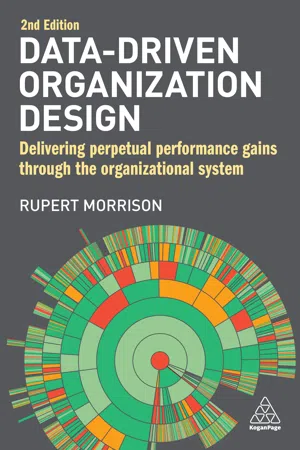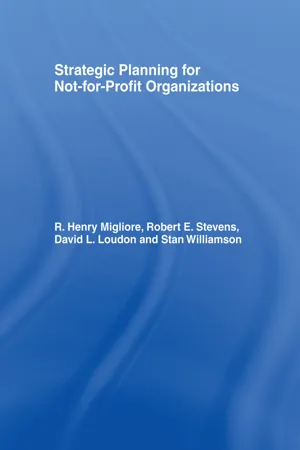Business
Operational Objectives
Operational objectives are specific, measurable goals that an organization aims to achieve in its day-to-day operations. These objectives are typically focused on improving efficiency, productivity, quality, and cost-effectiveness within the business. They help guide the actions and decisions of employees at all levels and contribute to the overall success of the organization.
Written by Perlego with AI-assistance
Related key terms
12 Key excerpts on "Operational Objectives"
- eBook - ePub
Lessons in Library Leadership
A Primer for Library Managers and Unit Leaders
- Corey Halaychik(Author)
- 2016(Publication Date)
- Chandos Publishing(Publisher)
Tactical objectives —are written to establish specific tasks that must be accomplished at the middle or lower levels of the organization. This type of objective is used to assign an area of responsibility for completing a task to a specific department, route resources as needed, establish deadlines for achieving results, and prioritize workflow. Building off the above example, a tactical goal would be “The marketing and outreach department will evaluate current efforts for effectiveness in raising awareness of library services.” A corresponding tactical objective might be “The marketing team will establish a plan for evaluating marketing material effectiveness by July 31, 2020.”Operational Objectives —are prepared by lower-level leaders to assign and prioritize specific tasks to teams or individuals. They are focused on completing small scale efforts that, when combined, help achieve both operational and, by extension, tactical goals. Operational Objectives tend to be the most detailed objectives created and have short timetables for completion. Keeping with our current examples, an operational goal might be that “Jackson and Cardee will create and deploy tools for measuring the effectiveness of the library’s current logo no later than January 31, 2019.” A supporting objective might be “No later than December 15, 2018, Jackson will use SurveyMonkey to email library patrons a survey on if the current logo is recognizable, effective at communicating the library’s mission, and appealing to the eye.”Purpose
Objectives can be used to support goal attainment efforts of both the organization and individual followers. Organizationally, objectives provide roadmaps for employees to follow in prioritizing and executing work. On a personal level, they are most effective at helping followers take steps to improve their capabilities by informing them exactly where their focus on improvement should be and how their success will be measured. - eBook - ePub
- Douglas Hague(Author)
- 2018(Publication Date)
- Routledge(Publisher)
Another kind of objective we found was one which laid down the results the firm as a whole was expected to achieve in a general way. It set out the levels of turnover, profit, etc. to be reached by the whole firm but it did not explain in detail how any individual product, or department, was expected to contribute to those results. Nor did it provide a plan of action for those responsible for individual products. These objectives were again non-operational ones for managers concerned with particular products, even though for the whole firm they were less vague than the non-Operational Objectives discussed in the previous paragraph. Indeed, they were often quite precise. This second kind of non-operational objective is important because it helps to determine the atmosphere within which managers have to set and to achieve specific targets for individual products. All the firms we studied had non-Operational Objectives of the second kind, whether they were implicit or explicit, or worked out in more or less detail.
All the firms also had Operational Objectives. The distinguishing characteristics of Operational Objectives are: 1.They set specific tasks for the firm or for particular individuals or groups. 2.They enable the firm to discover whether or not these tasks have been performed. 3.They state clearly the way the firm will judge whether or not the tasks have been achieved, both in terms of what will be judged and how. 4.They set a time limit for carrying out each task.4.3 Operational ObjectivesIt is because they are precise that Operational Objectives are operational.If they are to achieve their targets, firms must have arrangements for stating at least their key objectives in operational terms and for comparing performance with these Operational Objectives. Only in this way can they discover how far their objectives have been achieved. Firms should go on to study any differences between results and objectives and take whatever remedial action is necessary to bring the two back into line. However, this leads us beyond objectives to control systems. We shall discuss these briefly in Chapter 11 - eBook - ePub
Data-Driven Organization Design
Delivering Perpetual Performance Gains Through the Organizational System
- Rupert Morrison(Author)
- 2021(Publication Date)
- Kogan Page(Publisher)
This needs to be performed efficiently – i.e. at a financial cost that can be accommodated. A key theme of this book is how to make performance gains over time. To make a performance gain, you must achieve your objectives for less cost. But be careful what you wish for, because it might not be what you really need, or it might come at a cost not worth paying. What is clear is the importance of measuring the right things: what is measured is far more likely to get done. Attempting to distil success into a single measure drives poor behaviour and destruction of value. It creates an unhealthy organization which, if dogmatically followed, will lead to failure. Objectives management is both a strategic and an operational process. It begins with the overall corporate strategy, which is broken down into key organizational goals. As I mentioned in Chapter 2.2, goals and objectives are not the same thing, but they are often confused. Goals are the intended results you want your organization to achieve based on your vision and strategy. They are broad and should be directional, aspirational, audacious and inspiring. Goals don’t need to be specific and measurable. The strategic side of OM breaks down the company’s goals into a hierarchy of high-level company objectives. Objectives turn organizational visions into something meaningful and tangible: concrete, actionable steps that can be worked on and impacted immediately. The operational side of OM relates to both the cascading of objectives throughout the organization and to tracking, monitoring and managing the progress of the organization against those objectives. As I make clear in this chapter, objectives can be tracked and managed on an organization-wide level, but the tracking and managing of an individual’s objectives should not be taken as a measure of their performance - Robert E Stevens, David L Loudon, R Henry Migliore, Stanley G Williamson(Authors)
- 2013(Publication Date)
- Routledge(Publisher)
2 Objectives can be defined as clear, concise written statements outlining what is to be accomplished in key areas in a certain time period, in objectively measurable terms. Objectives can be classified as routine, problem solving, innovative, team, personal, and budget performance.Objectives can be set at upper organizational levels in key result areas such as growth, finances, physical resources, staff development and attitudes. They are also needed in sub-units, departments, or divisions of an organization. Most important, all organizational objectives must be consistent. Thus, a department’s objectives should lead to accomplishing the overall organization’s goals.Objectives serve two fundamental purposes. First, they serve as a road map. Objectives are the results desired upon completion of the planning period. In the absence of objectives, no sense of direction can be attained in decision making. In planning, objectives answer one of the basic questions posed in the planning process: Where do we want to go? These objectives become the focal point for strategy decisions.Another basic purpose served by objectives is in the evaluation of performance. The objectives in the strategic plan become the yardsticks used to evaluate performance. As will be pointed out later, it is impossible to evaluate performance without some standard by which results can be compared. The objectives become the standards for evaluating performance because they are the statement of results desired by the planner.Objectives have sometimes been called the neglected area of management. In many situations there is a failure to set objectives, or the objectives which are set forth are unsound and therefore lose much of their effectiveness. To counteract this, a management tool called management by objectives (MBO) was developed. It emphasizes the need for setting objectives as a basic managerial process, prpviding coordination of activities at all levels of the organization.- eBook - ePub
Operational Excellence
Journey to Creating Sustainable Value
- John S. Mitchell(Author)
- 2015(Publication Date)
- Wiley(Publisher)
Chapter 5 . Depending on business conditions, this could translate into some combination of producing more at the same cost through increased availability, production rate, quality, or improving production/mission efficiency at the same output to reduce operating costs. As will be noted later, this initial translation is guidance; the issue will be addressed in detail and refined by Program Leadership Team(s).From program objectives, the program mission, principles, overall strategy, and plan will emerge.A company that could sell everything produced without any price erosion concluded that concentrating on increasing throughput while holding fixed operating costs constant or nearly so was the most effective way to improve. This led them to an initial focus on production rate and quality.Mission Statement
Mission statement: an overall statement of measurable objectives that must be accomplished to attain the future state.The initial mission statement for the Operational Excellence program will be written by the Steering Team. The mission statement defines the program purpose and objectives as succinctly as possible. It is designed to create positive awareness, overall guidance, direction, motivation, and ownership to participants and nonparticipants alike. The mission statement should include measurable objectives and tangible benefits so that everyone is aware of the destination and what success will mean to them.A typical mission statement might read as follows:To assure continuing success and fully support all current and long-term business and Operational Objectives, the Operational Excellence program will safely establish and sustain an improvement of at least 20% overall operational effectiveness within 5 years measured by improved OEE and reduced operating cost. The program will improve performance and value delivered, build ownership for excellence and improvement, and assure job security. - eBook - ePub
Structured Decision Making
A Practical Guide to Environmental Management Choices
- Robin Gregory, Lee Failing, Michael Harstone, Graham Long, Tim McDaniels, Dan Ohlson(Authors)
- 2012(Publication Date)
- Wiley-Blackwell(Publisher)
4 Understanding ObjectivesEveryone seems to have something to say about the importance of objectives in guiding our choices. When we suggest to a new group that they need to start by setting objectives, often we’re told ‘we’ve already got those’. Usually, what people are describing is a terms of reference, a set of principles, or a list of things to do. Sometimes it’s a cold hard regulatory target. Sometimes it’s a short narrative from a ‘visioning’ process. But none of these constitute a set of objectives in the sense we are looking for. Because the decision sciences define ‘objective’ in a specific way, we need to take a moment to clarify what it is we mean.The deceptively simple answer is that, in any resource planning or evaluation situation, objectives are the things that matter. We have yet to meet a resource-management context that didn’t involve more than one objective; usually there will be four, six or eight things that matter to participants and to decision makers. The clear definition of these objectives is essential for good management decisions. If the objectives are vague, incomplete, or flat out wrong, then everyone will be working to resolve the wrong problem: as Yogi Berra is reported to have said, ‘If you don’t know where you’re going, chances are you will end up somewhere else’.If your decision context is choosing a restaurant to take your mother to for dinner on Friday night, for example, your objectives might pertain to the quality of the food, the convenience of getting to the restaurant, the price, and how long it may take to get served. You could compare the likely performance of different restaurants on these objectives by looking at their quality rating in a local restaurant guide, the time to travel there by car, the average price of a meal, and the ratio of staff to diners. In an environmental management context such as cleaning up pollution in a coastal estuary, your objectives might include improving water quality, keeping the financial cost of actions low, and enhancing recreational opportunities. The performance of alternative approaches against these objectives might be characterized by corresponding performance measures for each objective, such as the annual reduction in units of pollution entering the estuary, the discounted dollar cost of clean-up actions, and the number of recreational user-days for boating and bird-watching. - eBook - ePub
- Lidia Varbanova(Author)
- 2013(Publication Date)
- Routledge(Publisher)
Setting objectives involves a continuous process of research and decision-making. Setting the right objectives is critical for effective performance management, as well as motivating both personnel and the management team. Objectives also help internal coordination of different activities within an organisation (such as creative, managerial, financial, technical, supportive and marketing activities).A common problem in arts practice is the existence of too many, badly structured or illogically connected objectives, as well as objectives that are formulated too broadly. Therefore, it is optimal in a strategic plan to elaborate objectives in a three-dimensional framework (see Figure 4.2 ), consideringFigure 4.2 Three-dimensional framework for formulating objectives- the hierarchy of objectives;
- whom they target; and
- the measurability of objectives.
The first dimension is the hierarchy of objectives. The main (strategic) organisational objectives result from the mission and need to be split into sub-objectives which are much more detailed and cover functional areas or specific activities31 . Figure 4.3 gives an overview of the hierarchy of objectives.Figure 4.3 Hierarchy of objectives- The main organisational objectives are based on the most important results that the organisation aims to achieve. Usually these objectives are long term; they serve as priority guidelines and are connected with the chosen development strategies (see Chapter 6 ). The basis for formulating these objectives results from the strategic analysis.
- Functional objectives are decompositions of the main objectives. They are sub-objectives and focus on the main functional areas of the organisation’s activities. Depending on the type of organisation (state, nonprofit or business), they may be angled differently, for example
- managing personnel development and building public trust (organisations in the public sector);
- focused around increasing profit margins, developing commercial programmes or attracting investors (commercial organisations);
- eBook - ePub
Corporate Defense and the Value Preservation Imperative
Bulletproof Your Corporate Defense Program
- Sean Lyons(Author)
- 2016(Publication Date)
- Auerbach Publications(Publisher)
Operational Objectives should focus more on the day-to-day operations of the critical corporate defense components, and on delivering on the organization’s short-term corporate defense goals. In setting Operational Objectives for the different critical components, it is essential to ensure that all of these components are on the same page in order to support and complement one another. Basic examples of operational corporate defense objectives include the following: • To set clear Operational Objectives for each of the critical corporate defense components • To effectively execute the required actions to help achieve the Operational Objectives of the individual, critical corporate defense components • To monitor the performance of each of the critical corporate defense components 5.4.1.4 Critical Component Objectives In order to effectively deliver on the corporate defense strategy, it is important that each of the critical components set its own individual objectives at strategic, tactical, and operational levels. For each critical component, these objectives need to be in alignment with one another, in alignment with the objectives of the other critical components, in alignment with the overall corporate defense objectives, and in alignment with the objectives of the business. The setting of clear objectives can help direct the day-to-day activities of each of these critical components - eBook - ePub
- Richard M.S. Wilson(Author)
- 2010(Publication Date)
- Routledge(Publisher)
This process of moving from the general to the specific should lead to a set of objectives that are not just attainable within any budgetary or other constraints that exist, but that are also compatible with environmental conditions as well as organizational strengths and weaknesses. It follows from this that the process of setting objectives should form what is often referred to as an internally consistent and mutually reinforcing hierarchy. As an illustration of this, if we assume that corporate management is concerned first and foremost with, say, long-term profits and growth, it is these objectives that provide the framework within which the more detailed subset of Operational Objectives, including market expansion and product-specific increases in sales and share, are developed. Taken together, these then contribute to the achievement of the overall corporate objectives.It is these Operational Objectives that are the principal concern of those in the level below corporate management. Below this, managers are concerned with objectives that are defined even more specifically, such as creating awareness of a new product, increasing levels of distribution, and so on. This hierarchy points in turn to the interrelationship, and in some cases the confusion, that exists between corporate objectives and marketing objectives. The distinction between the two is an important one and is discussed at a later stage in this chapter. However, as a prelude to this, and indeed to the process of objectives setting, there is a need for the strategist to decide upon the business mission. We therefore begin this chapter with a discussion of the role and purpose of planning as the background against which we can more realistically examine approaches to the development of the mission statement and, subsequently, corporate and marketing objectives.8.3 The Purpose Of Planning
In discussing the nature and role of the planning process, Jackson (1975 ) comments that:Planning attempts to control the factors which affect the outcome of decisions; actions are guided so that success is more likely to be achieved. To plan is to decide what to do before doing it. Like methods, plans can be specially made to fit circumstances or they can be ready made for regular use in recurrent and familiar situations. In other words, a methodical approach can be custom built or ready made according to the nature of the problems involved. - eBook - ePub
- Tom Craig, David Campbell(Authors)
- 2012(Publication Date)
- Routledge(Publisher)
Organisational and Business Objectives
DOI: 10.4324/9780080454603-2Learning Objectives
After studying this chapter, students should be able to describe:- mission, vision and values of an organisation;
- the purpose of an organisation’s mission statement;
- the complex nature of defining business goals and objectives;
- the most important business objective;
- the stakeholders;
- the view that stakeholder coalitions determine the business objectives;
- the view that an organisation’s principals essentially determine the business objectives.
2.1 Vision
This is an aspirational view of the desired state of the organisation at a point in the future. The timeframe is dependent on the nature of the organisation and its environment but a typical vision would be set for 3–5 years ahead and reviewed annually in line with actual results and changing circumstances. The vision is in effect a statement of strategic intent that serves to focus the energies of the organisation management towards the setting and achievement of specific goals and objectives. Its aspirational nature means that it is consistently revised, as each set of goals are achieved, and further stretching future situations are established.2.2 Mission
The mission of an organisation is a general expression of the overall purpose of the organisation or, more simply, a broad description of the business it is in – its raison d’être. It broadly defines the scope and boundaries of the organisation, which should be in line with the expectations and values of major stakeholders.Mission Statements
Some organisations find it helpful to provide a concise and clear written statement of their broad objectives. Whilst such statements are called different names, most find the term mission statement - Jeff Slawsky, Samee Zafar(Authors)
- 2017(Publication Date)
- Routledge(Publisher)
But business strategy, no matter how ingeniously envisioned and how rigorously articulated, can only achieve its ends if the company has the know-how and practical means of implementing it. Business strategy may be clever thinking but it has no significance unless the company has charted for itself a clear and viable operational strategy to put it into effect.In the minds of managers, operational strategy quite often plays second fiddle to business strategy – its sexier sister. But the truth is that the two are inseparable. Operational strategy provides the necessary answers to the equally important and fundamental questions about business viability that most strategy consultants overlook:• What processes and resources are required to develop and deliver products and services? • What are the options for delivering the products and services? • How will the business retain its customers? • How can processes be made inexpensive and efficient? Operations management objectives The successful management of payment card operations requires the pursuit of the following key managerial objectives: • delivering business strategy • cost optimization • operational efficiency enhancement.A good operations department will focus on continual savings in costs and enhancements in efficiency. The cost and efficiency of product delivery has a direct and significant impact on card program profitability and customer retention. This is especially true in mature and saturated marketplaces where it is very difficult to increase market share without lowering prices and nearly impossible to raise prices without losing market share. Genuine innovation can break this deadlock. But in the financial services industry, radical innovation is rare. The pressure to increase profitability falls on the cost side of the profitability equation. If revenues cannot be raised, costs must be pared down.It is important to note that cost optimization does not necessarily mean cost reduction. Cost optimization, it is often said, is about cutting fat. Cost reduction, on the other hand, often results in cutting muscle, impairing the competitive strength of the business. Card issuers that offer simple no-frills cards depend on low-cost operations sometimes at the expense of customer service. Issuers that cater to the more affluent consumer segments incur higher operational costs as customers expect superior quality of service. Calls must be answered quickly and to the satisfaction of the customer. Operational costs, of course, also depend upon other factors that relate to the card issuer’s policies and procedures. A more risk-averse issuer may choose to deliver cards to new customers via secure mail or courier service instead of ordinary mail. They may also invest substantially in fraud prevention technology and credit management to prevent losses.- eBook - ePub
Evaluating Public Relations
A Guide to Planning, Research and Measurement
- Tom Watson, Paul Noble(Authors)
- 2014(Publication Date)
- Kogan Page(Publisher)
In much the same way that the term objective is frequently used without too much care, so there tends to be confusion with the associated (but not overlapping) concepts of strategy and tactics. While the objective is the end-point that the programme, campaign or activity is attempting to reach, the strategy is the overall approach to be used in pursuance of reaching that end-point: not to be confused with tactics, the particular set of actions required in order to implement the strategy.FIGURE 8.2 Goals and objectivesManagement by objectivesIn a general business context, the term objective is most commonly associated with the concept of management by objectives (MBO). Indeed, this is nothing more than common sense in public relations where we have already established that objectives play a key role before, during and after the implementation of a communications programme, and we have established that public relations is a management process.This reinforces the central role that objectives can, and frequently do, play in modern management thinking. As Kotler et al (2009: 105) explain, while most business units pursue a range of objectives, for an MBO system to work, the business unit’s various objectives must meet four criteria:- they must be arranged hierarchically, from the least to the most important;
- objectives should be quantitative whenever possible;
- goals should be realistic: goals should arise from an analysis of the business unit’s opportunities and strengths, not from wishful thinking;
- objectives must be consistent: it is not possible to maximize both sales and profits simultaneously.
These exhortations will be echoed in much of the discussion of public relations objectives outlined below. For instance, a hierarchy of objectives implies the linking of public relations objectives, directly or indirectly, with organizational objectives. Taking another example, the encouragement for objectives to be quantified is a mantra oft repeated in a public relations context. In terms of being realistic, public relations objectives need to be communications objectives. Finally, realism also points towards being realistic about the effects sought. Public relations practitioners too often fall into the trap of promising/assuming over-optimistic results from their efforts. This may breed euphoria in the short term, but certainly disappointment and disillusionment follow in the medium to long term.
Index pages curate the most relevant extracts from our library of academic textbooks. They’ve been created using an in-house natural language model (NLM), each adding context and meaning to key research topics.











